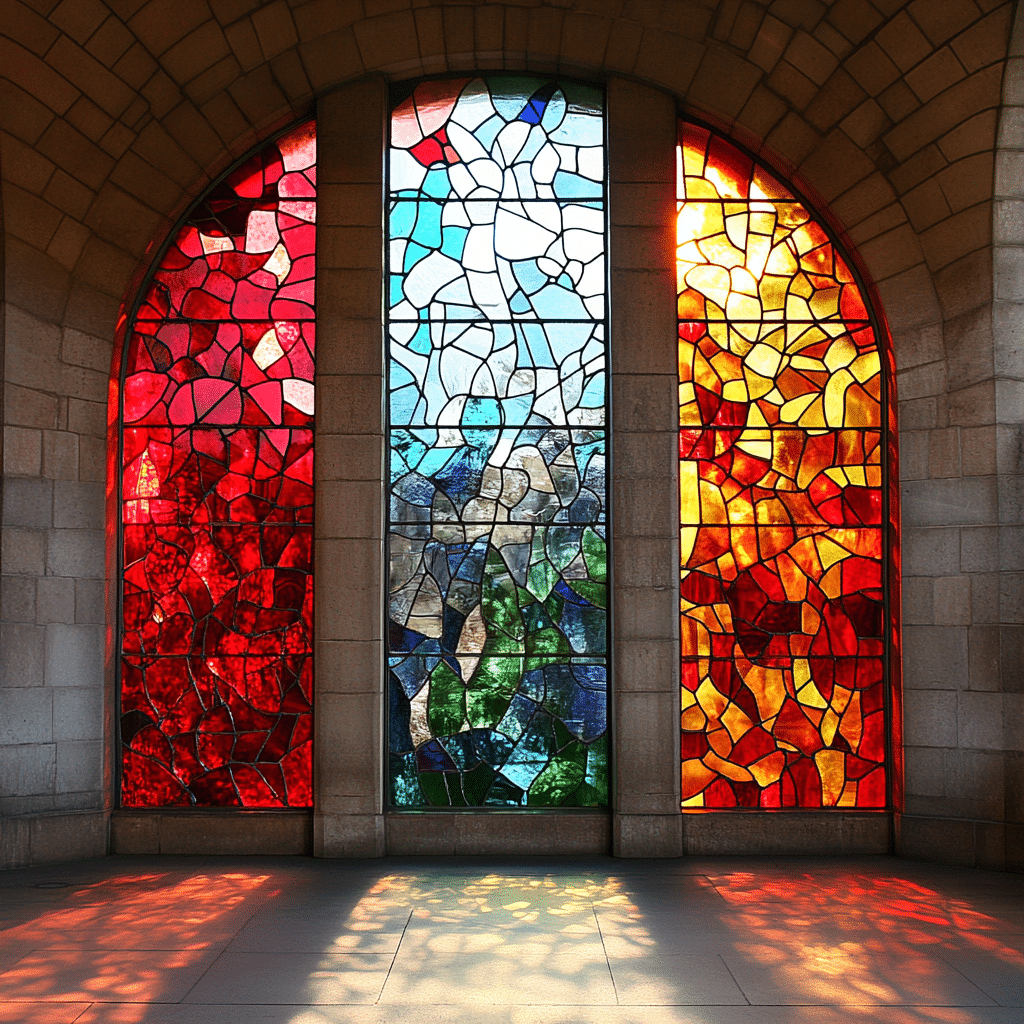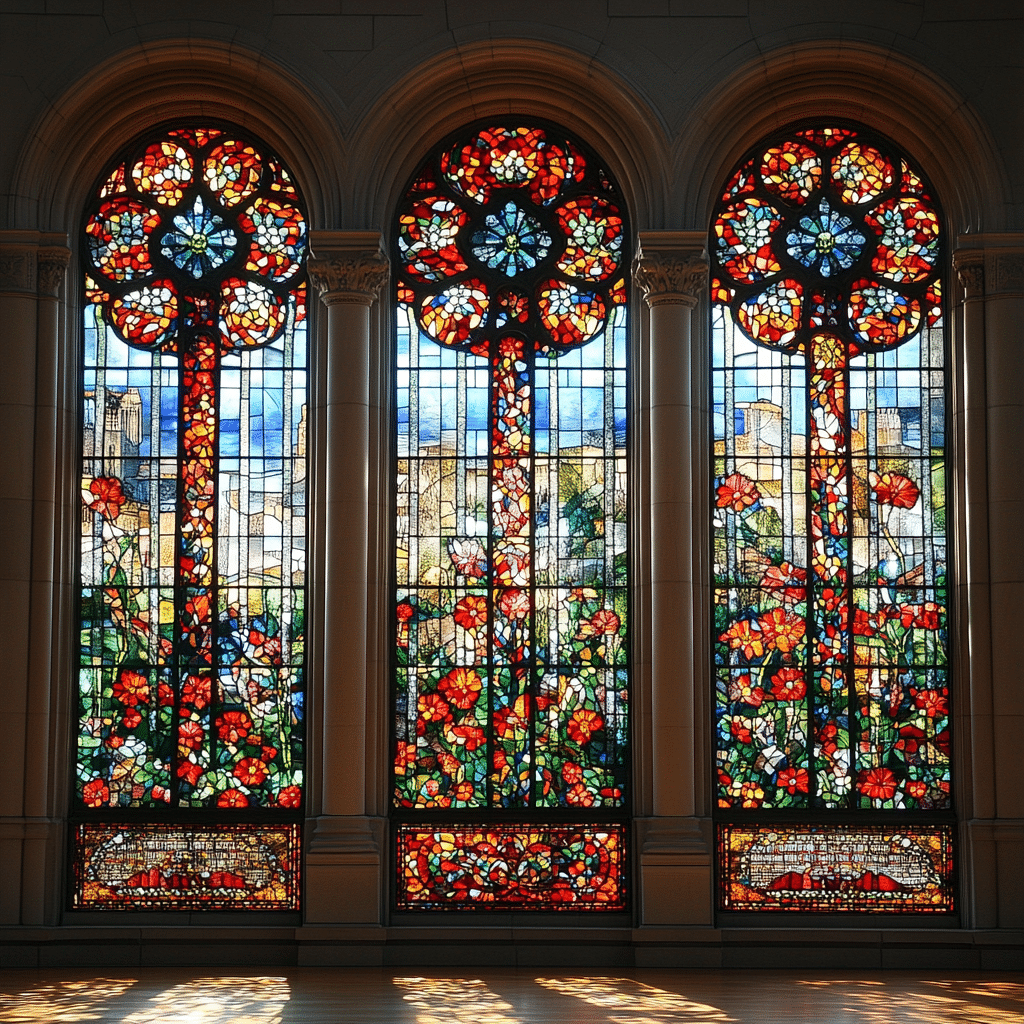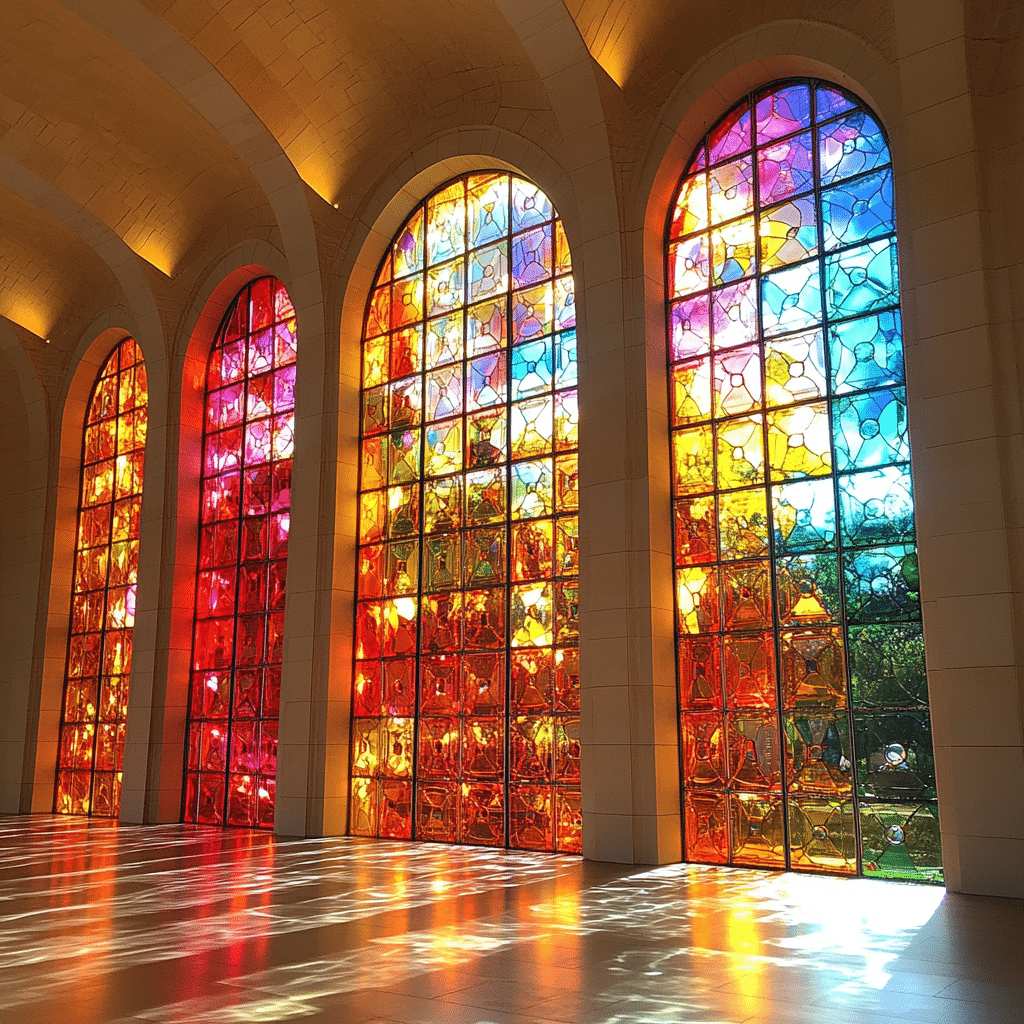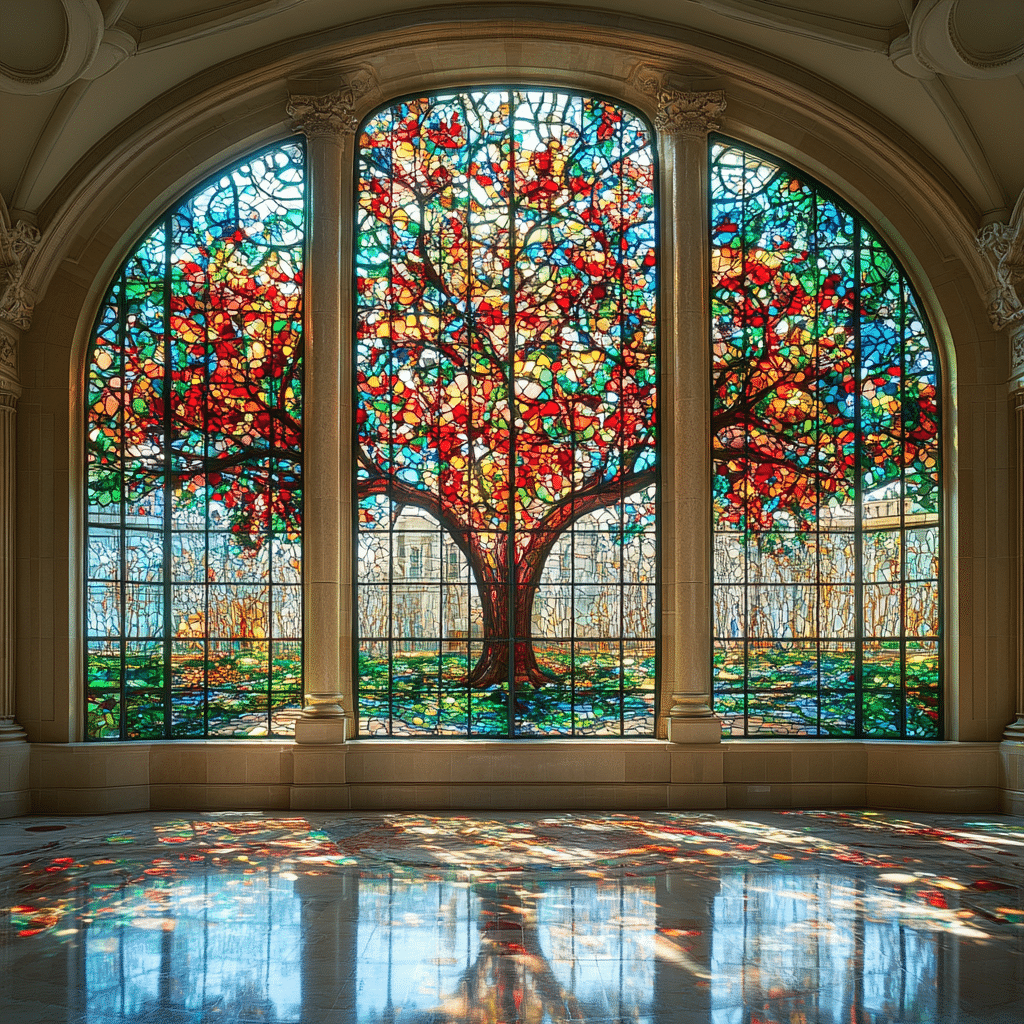
Stained Glass Windows Transforming Light Into Art
Stained glass windows have long captivated viewers, melding artistic flair with a spiritual essence that transcends time. With origins tracing back to the 4th century AD, these stunning glass pieces served to tell stories, educate the faithful, and usher in the light of creativity and devotion. From grand cathedrals in medieval Europe to modern installations, stained glass windows embody an enduring artistic legacy that continues to evolve even in today’s contemporary landscape. Each luminescent pane invites curiosity and reverence, revealing the dynamic narrative behind this age-old craft.
As we explore the captivating history of stained glass windows, it becomes evident that they are more than just decorative elements; they are pivotal in showcasing cultural shifts through the ages. Initially, these vibrant panels adorned religious spaces, illustrating biblical tales and capturing the imaginations of those who gazed upon them. Over the centuries, the artistry behind stained glass evolved, integrating artistry, science, and spirituality into an unbreakable bond that has withstood the test of time.

The History and Evolution of Stained Glass Windows
The journey of stained glass windows began in the churches and cathedrals of medieval Europe, where they served both educational and decorative purposes. Artists utilized vivid colors and intricate patterns to represent biblical figures and significant events, creating an ethereal effect as sunlight streamed through. With the advent of the Gothic architectural style in the 12th century, stained glass windows reached new heights, becoming grand spectacles that communicated faith to a largely illiterate populace.
However, the 19th and 20th centuries saw further transformations in the medium, adopting contemporary themes and styles. Artists such as Louis Comfort Tiffany breathed new life into stained glass, incorporating more secular elements and inventing techniques that enhanced color richness and depth. Nowadays, stained glass reflects modern values, addressing themes of social justice, conservation, and personal expression.
Understanding the history of stained glass windows is crucial for grasping the significance they hold today. Their evolution mirrors our society’s narrative, making them rich points for discussion on art, culture, and spirituality. This backdrop lends deeper meaning to contemporary works, further transcending their decorative appeal.

Top 7 Contemporary Examples of Stained Glass Windows Redefining Art
The resurgence of interest in stained glass windows has ushered in a fascinating array of contemporary examples that reflect our cultural zeitgeist. Here are seven modern masterpieces that redefine what stained glass art can be:
Gabriel Dawe captivates viewers through his “Plexus” series, which showcases the interplay of light, color, and thread. His installations, often displayed in public spaces, transform environments and challenge traditional stained glass aesthetics by blurring the lines between textile art and stained glass, creating a sensory experience that’s difficult to forget.
Within the walls of the Jewish Museum Berlin, stained glass windows take on poignant themes, inviting visitors to contemplate history and identity. Artists here have developed designs that integrate Jewish narratives and abstract forms, offering a contemporary understanding of cultural memory and the stories that permeate these intricate artworks.
Dale Chihuly’s glassworks, especially his chandelier at the Victoria and Albert Museum, exemplify how stained glass can transcend conventions. His grand creations exude vitality and originality, merging a fantastical design with colors that enchant and enthrall, illuminating any space they inhabit.
Mark Johnson’s work at the National Cathedral transforms stained glass windows into a platform for modern themes. His pieces delve into subjects like environmentalism and social justice, using vibrant colors and intricate designs to evoke emotional reflections on vital contemporary issues.
For the MONA FOMA festival in Tasmania, Emma E. W. Waller crafted her “One World” installation, harnessing local flora and fauna for inspiration. This piece not only reflects the breathtaking diversity of the region but also serves as an educational exploration of conservation, showcasing how stained glass can narrate nature’s significant role in our lives.
This museum dedicates itself to preserving and showcasing the artistry of stained glass. Visitors can explore a wealth of historic and contemporary works that demonstrate the craft’s progression through time, celebrating both its heritage and its future possibilities.
Renowned for their iconic glass objects, Tiffany Studios are experiencing a renaissance as contemporary artists draw inspiration from their techniques and materials. New creations that merge traditional craftsmanship with modern technology breathe life back into stained glass, reaffirming its relevance in today’s artistic scene.
The Cultural and Spiritual Significance of Stained Glass Windows
While stained glass windows thrill the eye, they also serve as cultural artifacts rich with spiritual significance. The colors and shapes evoke thoughtfulness and connection, often mirroring community beliefs, narratives, and aspirations. Observers find themselves enveloped in a transformative atmosphere, as the interplay of light and color creates an ethereal experience.
Research has shown that environments bathed in vibrant, colorful light positively influence human psychology, enhancing feelings of well-being. This evidence adds weight to the continued use of stained glass windows in places of worship and communal gathering, where emotional connections and settings promoting reflection are key components.
In examining their cultural and spiritual importance, it becomes clear that stained glass windows are far more than simple art pieces; they’re deeply woven into the fabric of society, providing insights into the values and stories of various communities.
The Innovation and Future of Stained Glass Windows
As we march into the future, stained glass windows are poised for even more innovation. Artists are increasingly applying modern technology to this traditional craft, introducing elements like augmented reality and LED lighting to breathe new life into their work.
Consider the implications of integrating smart technology into stained glass designs—imagine installations that respond to the dynamic nature of light and weather, changing their expression throughout the day. This convergence of old and new techniques may foster exciting dialogues between the traditional artistry of stained glass and the advancements of contemporary art.
Additionally, as the movement towards sustainability grows, artists are poised to embrace eco-friendly materials in their future stained glass projects. This shift not only aligns with contemporary values but also ensures the continued relevance of stained glass art as it intertwines with social consciousness.
Stained glass windows gracefully embody a storied heritage while adapting to the changing tides of society. As they continue to transform light into breathtaking artistry, they remain bridges between our past and future, offering a stunning testament to the artistic dialogues that enrich our everyday lives.
In conclusion, stained glass windows illuminate our world in prevalent and profound ways. From their historical roots to modern interpretations, they invite us to look closer at the interconnectedness of art and life. Let’s cherish them not only as visual spectacles but as transformative cultural narratives that shed light on the human experience in unique and unexpected ways. Whether researching elements like the latest APR rates for home improvements or simply admiring the beauty of handcrafted art, stained glass windows continue to forge meaningful connections across time and culture.
Stained Glass Windows: Where Light Becomes Art
Stained glass windows have captivated audiences for centuries, serving more than just a decorative purpose. These exquisite artworks transform ordinary light into vibrant colors, telling stories that often transcend the physical space they occupy. Did you know that some of the most renowned stained glass artists used techniques that are as intricate as the craft of filmmaking? For instance, the legendary Geoffrey Holder, known for his rich contributions to the arts, often drew parallels between visual arts and storytelling, emphasizing the narrative power every panel can hold.
A Splash of History
Tracing the history of stained glass windows reveals fascinating connections to various cultures. Originating in the Romanesque period, these colorful panels were often used in churches and cathedrals, creating stunning visual tapestries woven from light. Today, they’re not just seen in religious buildings; modern architecture embraces stained glass as well. It’s a trend comparable to the shifts we see in mortgage rates history graph, reflecting evolving preferences over time. Artists today find inspiration not just in tradition but also in contemporary themes, much like the innovative touches in films like Per Aspera Ad Astra that push the boundaries of creativity.
Symbolism and Meaning
Every piece of stained glass can carry deep symbolism, often related to spiritual themes. For instance, the use of blue might represent the heavens, while red could symbolize love or sacrifice. In many ways, this layers meaning in a similar fashion to how directors layer narratives in films to provoke thought. Just as fans often ponder whether are Taylor swift ‘s Parents divorced has any impact on her songwriting, viewers standing before a stained glass window might reflect on its origin and the stories it tells about the community around it.
Stained glass windows don’t just beautify spaces; they also serve as a canvas for artistic expression, much like the social movements seen in creations surrounding figures like Jared Leto, who cultivates a unique following through art and performing. With features that catch and play with the light, they transform mundane interior spaces into sanctuaries of beauty, resonating with the audiences much like a captivating performance by Erdenetuya Batsukh, where light and drama dance in harmony. So next time you admire a stained glass window, remember it’s more than just art; it’s a reflection of human experience, creativity, and history.










